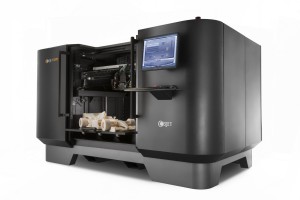2014 is well underway and while we have already started to experience some of the many trends, it’s important to know and understand the strategic technological trends that are going to make a big splash this year and continue to do so. Gartner, an information technology research and advisory company on the East Coast, released in 2013 the top 10 trends that will hit us this year. These trends will impact businesses, individuals, and other organizations alike so techies all over the world rejoice, technology is continuing its never ending evolution. So without further delay, here are the top trends for 2014 that Gartner says companies should factor into their strategic planning processes:
Mobile Device Diversity and Management
Now through 2018, a variety of devices, user contexts, and interaction paradigms will make “everything everywhere” strategies unachievable. The unexpected consequence of bring your own device (BYOD) programs has been to exponentially increasing the size of the mobile workforce anywhere from two to three times, placing a large amount of strain for Finance and IT departments. In order to avoid the strain and consequence of such mobile diversity and to better balance flexibility with confidentiality and privacy requirements, it’s recommended that companies define clear expectations and policies for employee-owned hardware.
 Mobile Apps and Applications
Mobile Apps and Applications
Improved JavaScript performance will begin to push HTML5 and the browser as a mainstream enterprise application development environment is predicted through 2014. Because of this, the Gartner company recommended that developers focus on expanding user interface models including richer voice and video that will connect people in multiple different and new ways. Because Apps are smaller and more targeted, they will continue to grow, while applications themselves will begin to shrink, because of their larger comprehensive levels . While the App creation market continues to be very fragmented with an estimated 100 plus potential tool vendors, consolidation isn’t likely to for a few years yet. Gartner suggests that “the next evolution in user experience will be to leverage intent, inferred from emotion and actions, to motivate changes in end-user behavior.”
The Internet of Everything
It’s no surprise that the Internet is expanding beyond the PC and mobile device as it is integrated into cars and other consumer items. However, as exciting as that might seem, the problem lies in the fact that a majority of technology vendors are not operationally or organizationally ready since they have yet had the chance to explore the possibilities of such expansion. Gartner identifies four basic usage models that are emerging from the digitizing and combining data streams and services-Manage; Monetize; Operate; Extend. These can all be applied to any of the “internets” (people, things, information, and places). Businesses and companies need to realize they have to potential to leverage those four models with more than the Internet of Things (assets and machines). Therefore the Internet of Everything will supersede the Internet of Things leveraging the four identified models.
Hybrid Cloud and IT as Service Broker
Another suggestion is bringing together personal clouds and external private cloud service, which Gartner claims to be imperative and essential. With a hybrid future in mind and to ensure future integration/interoperability is possible private cloud services should be designed. While the majority of hybrid cloud services will at first be less dynamic with early hybrid cloud services likely to be more static, engineered compositions, Gartner suggests that more deployment compositions will emerge as cloud service brokerages (CSB) evolve.
Cloud/Client Architecture
Cloud/client computing models are shifting. The increasing capabilities in many mobile devices, increased demand and cost of networks and the need to manage bandwidth use creates incentives, in some cases, to minimize the cloud application computing and storage footprint. This also exploits the intelligence and storage of the client device. However, the increasingly complex demands of mobile users will drive apps to demand increasing amounts of server-side computing and storage capacity.
The Era of Personal Cloud
As we enter the era of the personal cloud, a power shift will come into play as it slips from devices more towards services. The type of device one has will be increasingly less important, as the personal cloud takes over some of the role the device has traditionally had. A collection of devices will be used with no primary one, with the personal cloud taking on that role.
Software Defined Anything
Software-defined anything is a collective term defined by “improved standards for infrastructure programmability and data center interoperability driven by automation inherent to cloud computing, DevOps and fast infrastructure provisioning.” Leading vendors in given sectors of an infrastructure-type may elect not to follow standards that increase competition and lower margins, but end-customer will benefit from simplicity, cost reduction opportunities, and the possibility for consolidation.
Web-Scale IT
Web-scale IT is a pattern of global class computing that by rethinking positions across several dimensions, delivers the capabilities of large cloud service providers within an IT setting. Large cloud services providers such as Amazon, Google, Salesforce.com, and the like are re-inventing the way in which IT services can be delivered because their capabilities exceed the “scale in terms of sheer size to also include scale as it pertains to speed and agility.” Gartner recommends that in order to succeed, IT organizations should align with and emulate the processes, architectures, and practices of these leading cloud providers.
Smart Machines
It is suggested in Gartner’s trend report that the “the smart machine era will be the most disruptive in the history of IT” as it continues to grow through 2020. These will include the proliferation of contextually aware, intelligent personal assistants, smart advisors (IBM Watson), advanced global industrial systems, and autonomous vehicles. These systems will do what we once thought only people could do and machines could not, and individuals and businesses alike will invest in them in order to control and use their own smart machines on their paths towards success. It’s projected that smart machines will strengthen the forces of consumerization after enterprise buying commences.
 3-D Printing
3-D Printing
We have already started to see more and more 3-D printing use. In the coming year alone the projected growth of 3-D printers is 75% with a spurt of 200% in 2015. Gartner suggests that “the consumer market hype has made organizations aware of the fact 3-D printing is a real, viable and cost-effective means to reduce costs through improved designs, streamlined prototyping and short-run manufacturing.”
While you don’t have to adopt and invest in all the trends listed, a company should take them into strong consideration and deliberation within the next few years. The Nexus of Forces (convergence of social, mobile, cloud, and information) continues to grow and drive change, creating many new opportunities, and these emerging top 10 trends are going to impacting forces for years to come.











